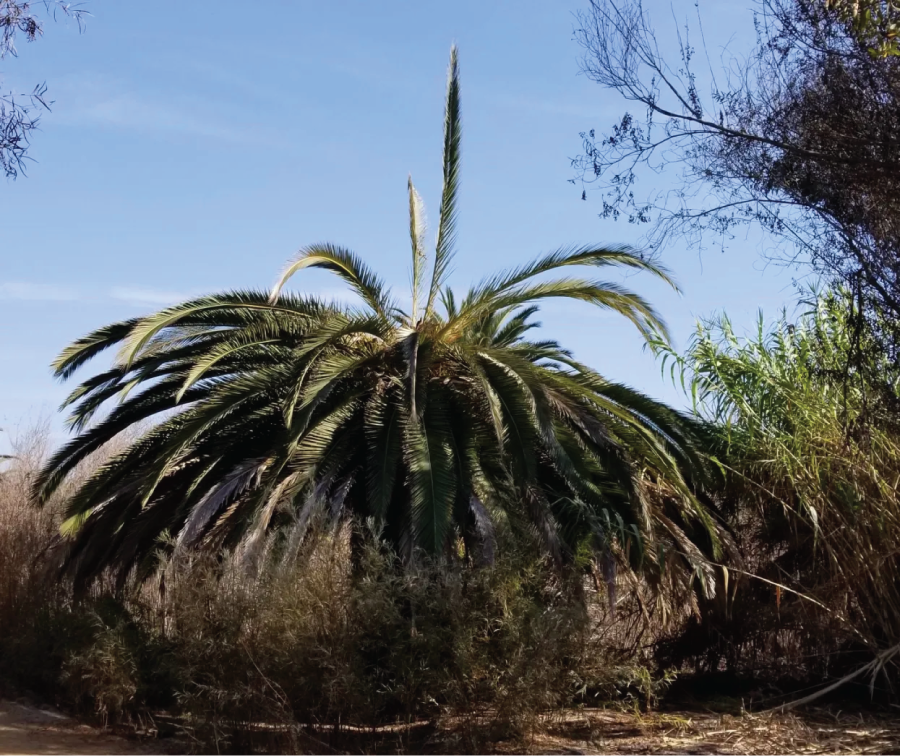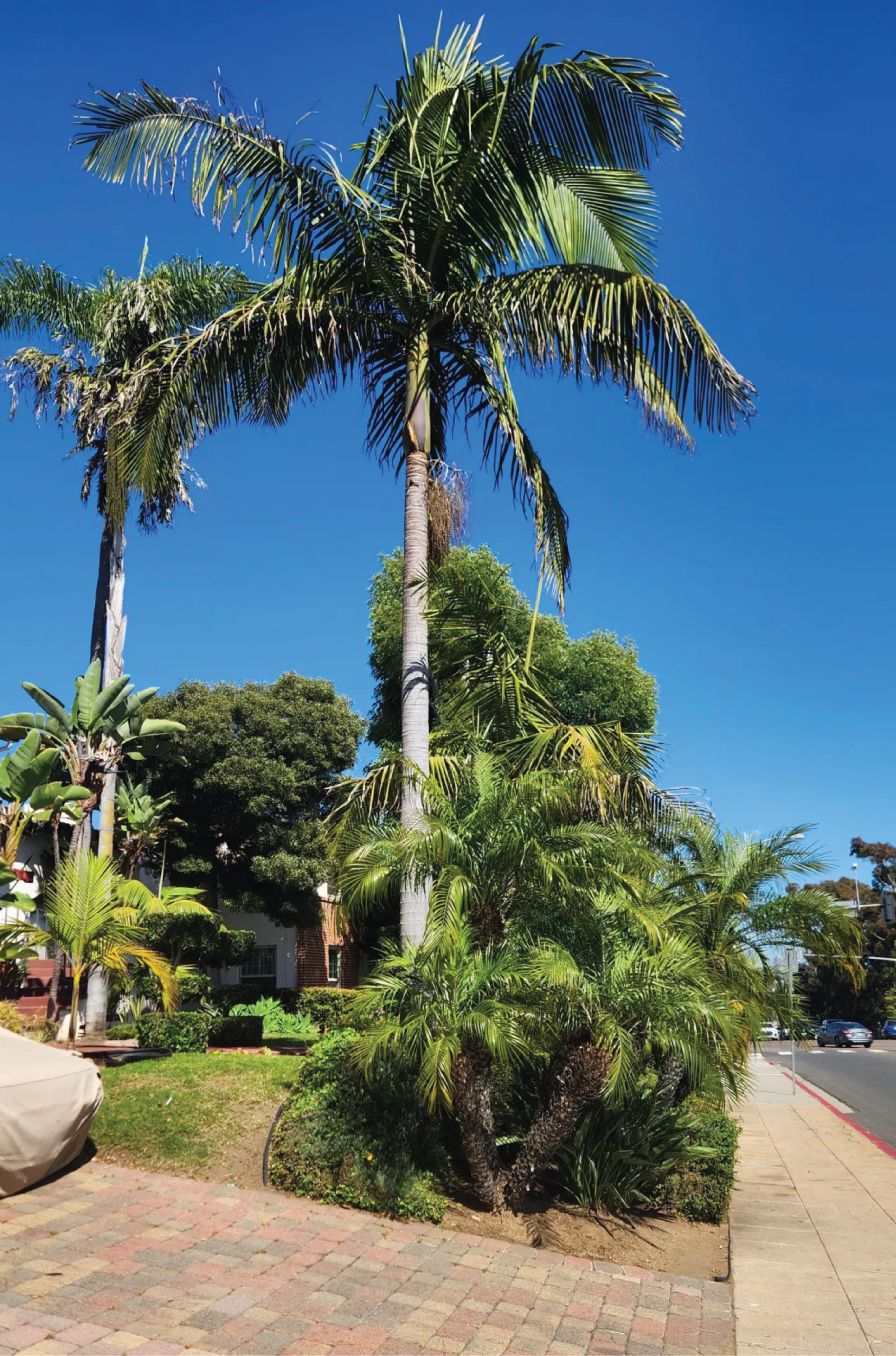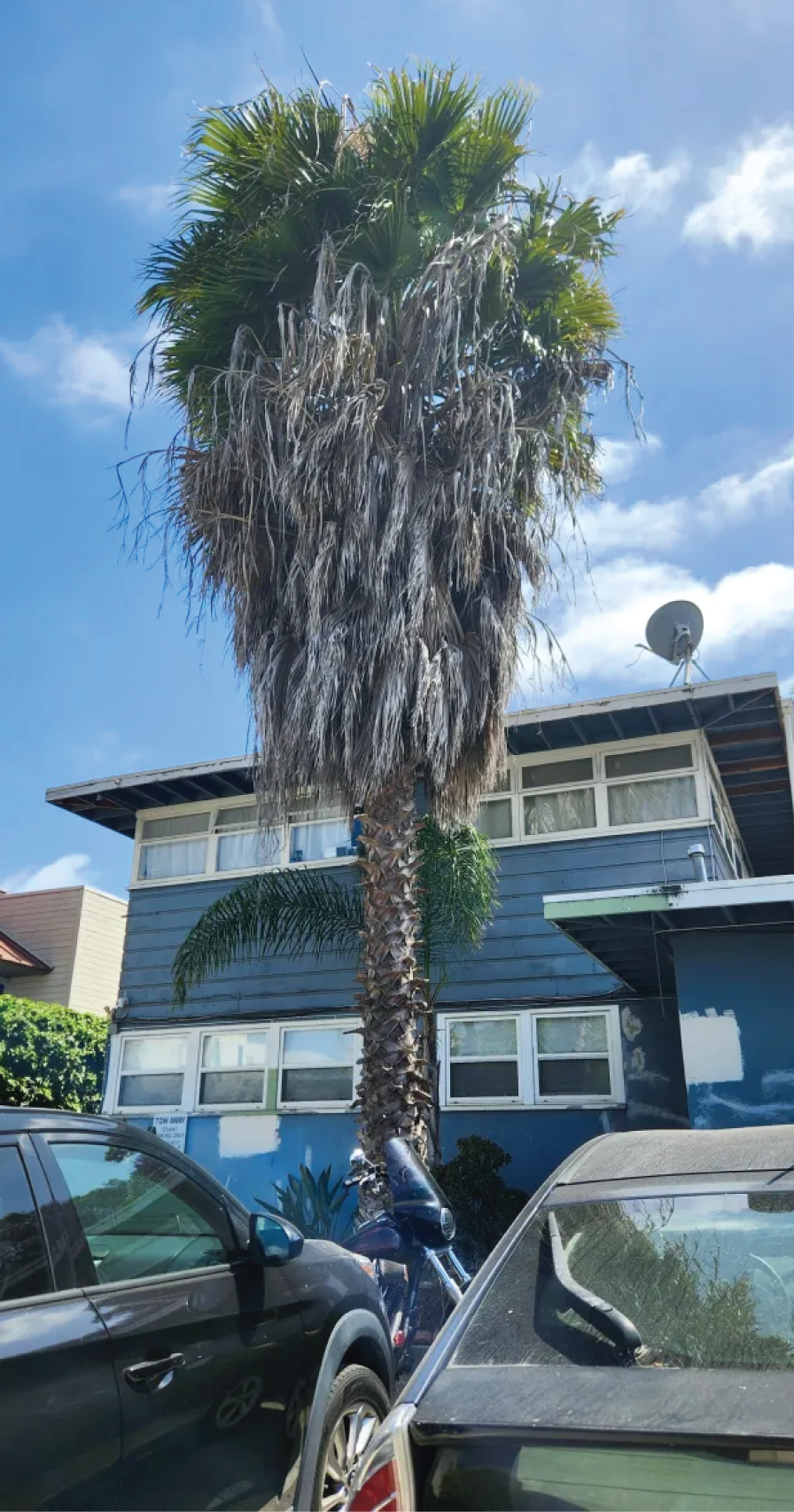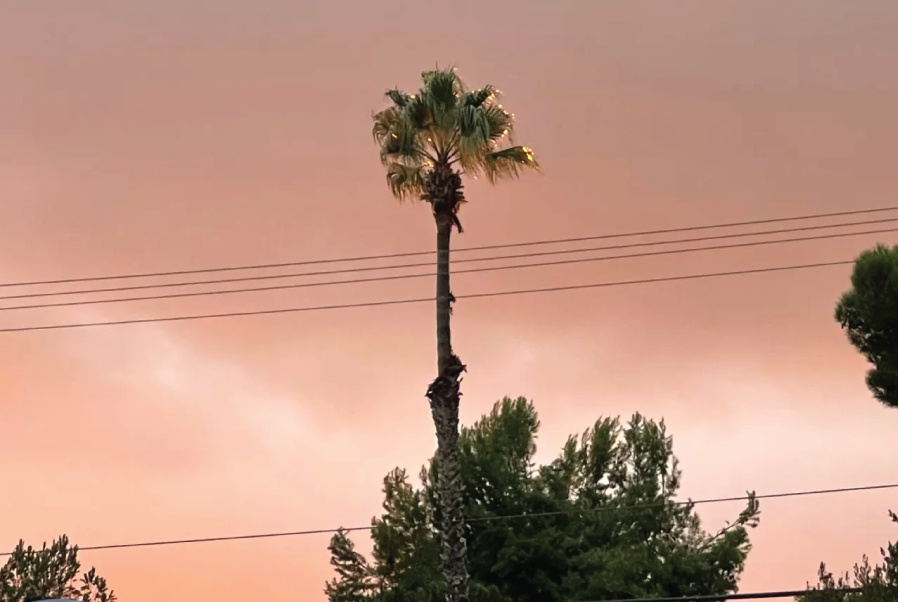What to consider with palms in the landscape
Beloved symbol of Southern California lifestyle also needs a plan for care and maintenance

This tree shows early-stage crown collapse caused by meristem damage from the South American Palm Weevil. (UCANR)
By Susan Baird
(This article originally appeared in the July 13 edition of the San Diego Union-Tribune)
It is estimated that there are over 2,500 species of palms, yet only one is native to California — Washingtonia filifera, or the California fan palm. How is it that with only one native species, palms are so iconic in Southern California? While it is believed that the Spanish may have brought some to adorn the Missions, there was a surge of palm plantings in the early 1930s, both to beautify Los Angeles for the 1932 Olympics and as a job source for L.A.’s unemployed.
Palm trees belong to a plant group called monocots. They’re more closely related to grasses and corn than they are to oaks, which are dicots. For this reason, many scientists don’t consider palms to be trees at all. Palms have trunks and leaves, yet monocots have characteristics that require significant landscaping considerations.
The palm’s adaptability and versatility are two reasons they are so popular for landscaping. There are palms that will tolerate ranges of drought, sun, salt, or heat. Further, palms produce different fruit, grow to different heights, and have different frond shapes.
While that means there is a palm to meet most landscape needs, their adaptability can be a problem. The California Invasive Plant Council includes two palms on the California invasive species list: the Mexican fan palm (Washingtonia robusta) and the Canary Island date palm (Phoenix canariensis). The Mexican fan palm is easily confused with our one native palm and can cross pollinate it when planted in proximity. To avoid the environmental impact of adding invasive species, please select wisely when considering palms for your landscape.

This landscape features solitary palms surrounded by a low-growing, clumping variety. (Susan Baird)
Starting underground, the roots of monocots like palms, originate directly from the stem, rather than branching from other roots. These roots form dense mats around the base, so if you want other plants under a palm tree, it is best to plant them with the palm. Digging through established roots can be quite difficult and may harm the tree.
Because palm roots and shoots grow most rapidly in warm soil, choosing the right transplant season is key to their successful establishment. In Southern California, the warmest weather is also our driest season so it is important to irrigate newly transplanted trees, even for drought-tolerant varieties. While recommendations for “traditional” trees are to expand the irrigation diameter with the tree’s canopy, for palms the diameter remains 2 to 3 feet from the trunk.
Another characteristic that separates palms from other trees is the structure of their trunks. While there are climbing varieties of palms, those with either solitary or clumping trunks are most common in landscapes. Young palms won’t gain appreciable height until their trunk has reached its maximum diameter which is helpful for landscape placement of solitary palms if the goal is to define a space or make a border. Clustering palms will spread from the base and can be useful to fill vacant spaces or for privacy and if a solitary morphology is desired, side shoots can be pruned off.

Leaving the base of the leaf stems gives palm trunks an interesting texture, and this tree has a significant “skirt.” Nevertheless, leaf stems and dry skirts provide fuel for fires and should be removed in urban settings. (Susan Baird)
The stems of both types of palms have a single point of vertical growth, or meristem, which if pruned or damaged will eventually result in the death of that stem. This is evident all-around San Diego since the food of choice for the invasive South American Palm Weevil larva is the palm’s rapidly growing crown. The damage is first seen at the crown where eggs are laid and, if left untreated, the entire tree will die. While the larvae continue through their lifecycle, the adults have moved on to other palms or other plant families to repeat the process. Treatments are available and effective if used for the life of the plant.
The meristem tissue produces fronds and fruit, bringing us to the top of the tree. Palm leaves and fruit have been key to human existence for thousands of years, providing food, oils, shelter, and more. In addition to fixing the tree’s maximum diameter, the crown of the tree establishes an optimal number of leaves to maintain the tree. Any additional fronds will either be shed from the tree or remain attached, forming a “skirt.”
In a natural setting, dropped leaves could provide shade or shelter for an animal or be left to decompose. Fallen or attached fruit can be a food source for birds, reptiles and people. Fronds that remain attached in a skirt become habitat for countless birds, bats, snakes, and rodents. For those living in urban settings, there are further considerations. Fallen palm fronds and inflorescence are heavy and may be dropping from a substantial height, potentially harming pets, people, solar panels, and other plants. Palm skirts continue to be attractive homes to rodents and can catch flying embers if fire is nearby. The Escondido Fire Department recommends annual removal of both fronds and fibrous leaf bases if a palm’s dripline is within 30 feet of a structure (within 10 feet tree removal is preferred). This process requires special skills and equipment and should be done by a professional.

Palm fronds can catch fire during a firestorm and easily spread the flames to other vegetation and homes. (Linda Morse)
Because palms continue to evoke images of paradise or the golden age of Hollywood, and grow well in our climate, their allure continues. If you decide to add palms to your landscape, be sure you include a budget allowance for the annual maintenance required to enjoy your palms for a long time.
Baird, who studied biology and worked in the biotech Industry, has gardened in the Midwest and on both coasts and has been a UCCE Master Gardener since 2020.

